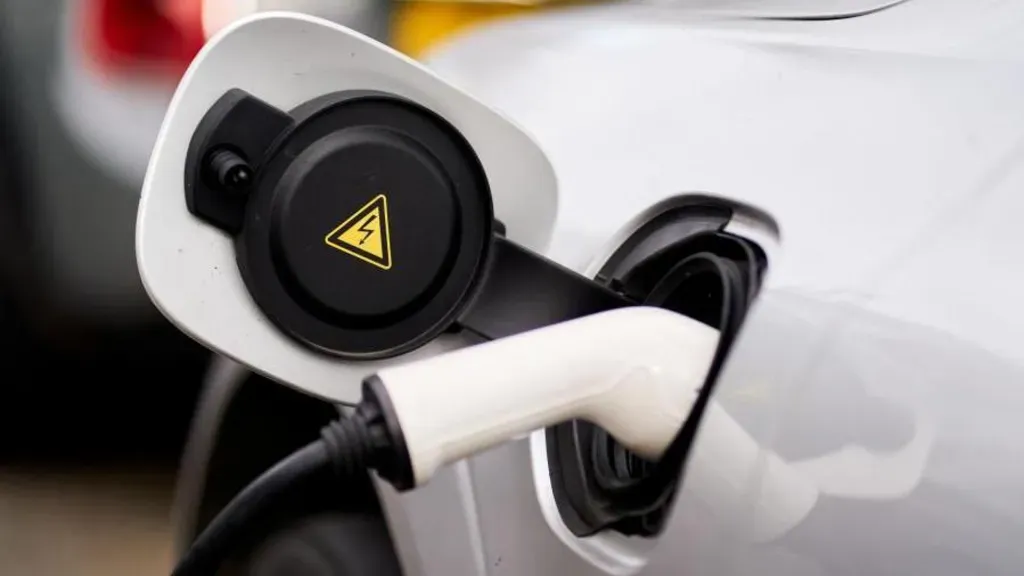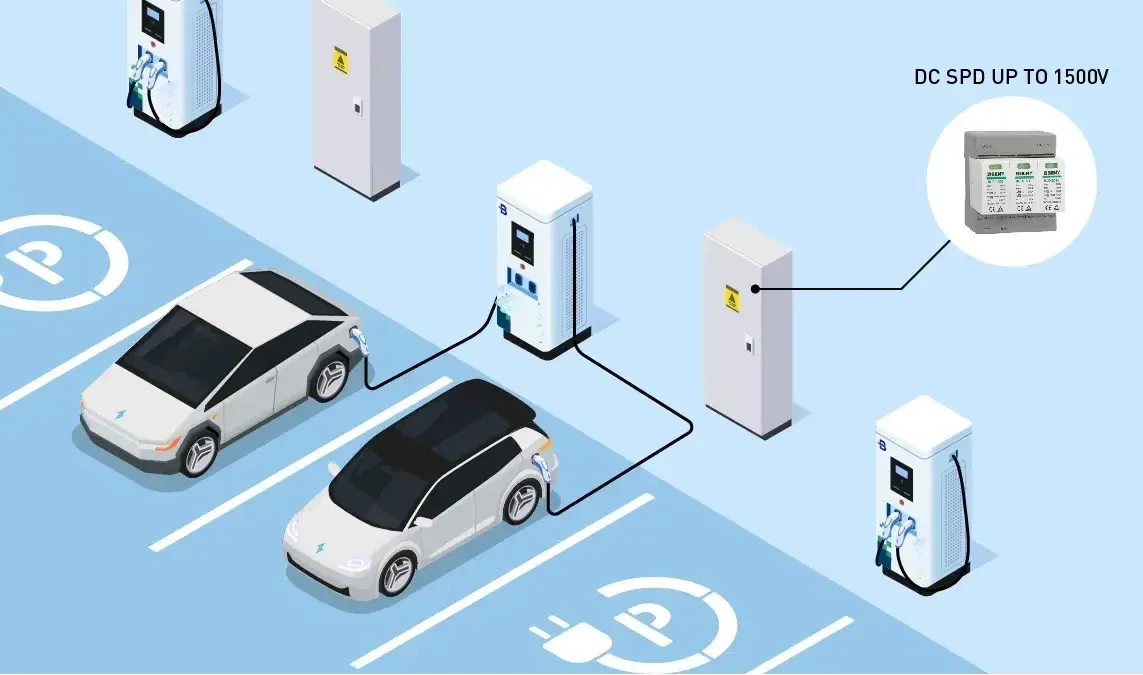As the world transitions toward sustainable energy solutions, electric vehicles (EVs) have emerged as a cornerstone of the green revolution. However, the infrastructure supporting EVs, particularly charging stations, faces unique challenges. One of the most critical yet often overlooked aspects of EV charging infrastructure is surge protection. EV charging stations handle massive amounts of electricity, making them inherently vulnerable to power surges. These surges—sudden and sharp increases in voltage—can result from various factors, including lightning strikes, grid fluctuations, or internal electrical faults. While these spikes are often brief, their impact can be devastating, damaging sensitive electronic components, causing malfunctions, or even leading to complete system failure.
Surge protection devices (SPDs) serve as the first line of defense against these harmful voltage spikes. By safely redirecting excess energy, SPDs prevent damage to the charging station, the vehicles connected to it, and, most importantly, ensure the safety of users. Without robust surge protection measures, the reliability and safety of EV charging infrastructure are compromised, potentially hindering the widespread adoption of electric vehicles.
This article delves into the importance of surge protection for EV charging stations, explores how surge protection systems work, and provides guidance on selecting the right surge protection devices to safeguard this critical infrastructure.

Surge protection devices (SPDs) for EV charging stations are categorized into three types—Type 1, Type 2, and Type 3—each designed to address specific surge protection needs.
Type 1 surge protectors are built to handle direct lightning strikes or high-energy surges that enter through the main power line. Installed at the building’s power entry point, they act as the first line of defense in areas prone to severe electrical disturbances. These devices are essential for high-risk locations where lightning strikes are common.
Type 2 SPDs provide secondary protection, shielding internal electronics and communication systems from residual surges and grid fluctuations. Typically installed near the charging point, they complement Type 1 devices by addressing moderate surges that may bypass the primary protection.
Type 3 surge protectors offer localized protection for sensitive components within the EV charger. Positioned close to the end devices, they act as the final barrier against minor surges, ensuring the safety of low-power electronics and communication circuits.
By combining these three types of SPDs, EV charging stations can achieve comprehensive surge protection, safeguarding both the infrastructure and the vehicles they serve.
EV charging stations represent a significant investment for businesses, governments, and individuals. These stations are equipped with advanced electronics and software that manage power delivery, user authentication, and payment processing. A single power surge can damage these components, leading to costly repairs or replacements. Surge protection ensures the longevity and reliability of this high-value infrastructure, protecting the investment and ensuring uninterrupted service.
Safety is paramount in any electrical system, and EV charging stations are no exception. Power surges can not only damage equipment but also pose serious safety risks to users. For instance, a surge could cause overheating, electrical fires, or even electric shocks. By incorporating surge protection, charging station operators can mitigate these risks, creating a safer environment for EV owners.
Downtime is a significant concern for EV charging networks. A damaged charging station can take days or even weeks to repair, leading to lost revenue and frustrated customers. Surge protection minimizes the risk of damage, reducing the likelihood of unexpected downtime and lowering maintenance costs over the long term.
As the EV industry matures, regulatory bodies are introducing stricter standards for charging infrastructure. Many of these regulations mandate the inclusion of surge protection devices to ensure safety and reliability. By proactively implementing surge protection, charging station operators can stay ahead of regulatory requirements and avoid potential fines or legal issues.

Surge protection systems are engineered to detect and mitigate excess voltage, ensuring that sensitive components within EV charging stations remain unharmed. When a power surge occurs, the surge protection device (SPD) acts as a gatekeeper, diverting the excess energy away from the charging station and into the ground. This process happens almost instantaneously, typically within milliseconds, providing near-instantaneous protection.
Modern surge protection systems are highly sophisticated, capable of handling a wide range of voltage levels and responding to surges caused by both external and internal factors. External factors include lightning strikes or grid disturbances, while internal factors may involve switching operations within the power grid or the sudden disconnection of heavy loads. Advanced SPDs are designed to be durable and long-lasting, offering reliable protection throughout the lifespan of the charging station.
The effectiveness of a surge protection system depends on its design and components. A typical SPD includes metal oxide varistors (MOVs), gas discharge tubes, or silicon avalanche diodes, which work together to absorb and redirect excess energy. Additionally, many systems incorporate monitoring and diagnostic features, allowing operators to assess the health of the surge protection system and address potential issues before they escalate.
Selecting the right surge protection device for an EV charging station is critical to ensuring optimal performance and safety. Here are some key features to consider:
The joule rating indicates the amount of energy a surge protector can absorb before it fails. For EV chargers, which handle high power levels, a surge protector with a minimum rating of 2000 joules is recommended. Higher joule ratings provide greater protection, especially in areas prone to frequent or severe surges.
Clamping voltage refers to the voltage level at which the surge protector activates and begins diverting excess energy. A lower clamping voltage offers better protection. For EV charging stations, a clamping voltage of around 400V is considered optimal.
The response time of a surge protector is the speed at which it reacts to a voltage spike. Faster response times provide better protection. Look for surge protectors with response times of less than one nanosecond.
Underwriters Laboratories (UL) is a globally recognized safety certification organization. A UL-listed surge protector has been tested and verified to meet stringent safety standards. Always choose surge protection devices with UL certification to ensure reliability and compliance.
Given the critical role of surge protectors, durability is essential. Look for devices made from high-quality materials and designed to withstand harsh environmental conditions. Additionally, consider surge protectors with replaceable modules, which can extend the lifespan of the system.
Advanced surge protection systems often include monitoring and diagnostic features. These capabilities allow operators to track the performance of the SPD, identify potential issues, and schedule maintenance proactively.
As the EV industry continues to grow, the demand for reliable and safe charging infrastructure will only increase. Surge protection will play a pivotal role in meeting this demand, ensuring that charging stations remain operational, safe, and efficient. Innovations in surge protection technology, such as smart SPDs with real-time monitoring and remote diagnostics, are already transforming the landscape, offering enhanced protection and convenience.
Moreover, as renewable energy sources like solar and wind become more integrated into the power grid, the potential for grid instability and voltage fluctuations will rise. This makes surge protection even more critical for EV charging stations, which must operate reliably in diverse and dynamic energy environments.
Surge protection is not just an optional add-on for EV charging stations—it is a necessity. By safeguarding high-value infrastructure, ensuring user safety, reducing downtime, and ensuring compliance with industry standards, surge protection devices play a vital role in the success of the EV revolution. As the adoption of electric vehicles accelerates, investing in robust surge protection systems will be essential for building a resilient and reliable charging network that can support the future of sustainable transportation.
For businesses, governments, and individuals involved in the EV ecosystem, understanding the importance of surge protection and selecting the right devices is a critical step toward creating a safer, more efficient, and future-ready charging infrastructure. By prioritizing surge protection today, we can ensure that the transition to electric mobility is not only smooth but also sustainable for generations to come.
